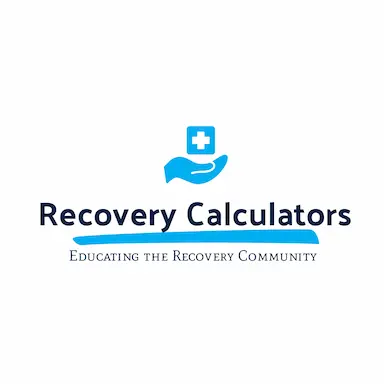A Guide to All Addiction Calculators and Their Benefits

Navigating through addiction recovery can be challenging, but having the right tools can make a significant difference. At Recovery Calculators, we provide a range of medical calculators designed to support individuals on their journey to sobriety. These tools offer precise assessments that help both medical professionals and patients track progress and make informed decisions about treatment options. One of the key aspects of overcoming addiction is understanding the severity of withdrawal symptoms and the effectiveness of treatments. Our calculators, such as the Clinical Institute Withdrawal Assessment (CIWA) for alcohol and the Clinical Opiate Withdrawal Scale (COWS) for opiates, play a crucial role in this process. These tools are designed to accurately measure withdrawal symptoms, providing valuable information that can guide the course of treatment. In addition to these clinical tools, we also offer the Short Michigan Alcoholism Screening Test (SMAST), which helps identify alcohol use disorders. By using these calculators, individuals and healthcare providers can develop a comprehensive plan tailored to the specific needs of each patient. In this guide, we’ll explore the various calculators we offer and highlight the benefits they bring to the recovery process. Understanding and utilizing these tools can pave the way for a healthier, sober life. CIWA: Understanding the Clinical Institute Withdrawal Assessment The Clinical Institute Withdrawal Assessment (CIWA) is an essential tool used for evaluating the severity of alcohol withdrawal symptoms. This assessment helps medical professionals determine the level of care needed for individuals undergoing alcohol detox. CIWA is crucial because withdrawal from alcohol can be extremely dangerous and even life-threatening without proper medical supervision. CIWA measures ten different symptoms of alcohol withdrawal, including nausea, tremors, and agitation. Each symptom is rated on a scale to provide a total score that indicates the severity of withdrawal. Higher scores typically require more intensive medical intervention, while lower scores might only need supportive care. By using CIWA, healthcare providers can create a customized treatment plan that ensures patient safety and comfort. This tool is frequently used in various settings, such as hospitals, luxury rehabs, and alcohol rehabs. It helps in monitoring the effectiveness of prescribed treatments and adjusting them as necessary. Understanding CIWA’s role in assessing alcohol withdrawal can provide peace of mind to those beginning their journey towards recovery, knowing they are receiving the right level of care at the appropriate time. COWS: Monitoring Opiate Withdrawal with Clinical Tools The Clinical Opiate Withdrawal Scale (COWS) is a tool designed to measure the severity of withdrawal symptoms in individuals who are detoxing from opiates. This tool is vital for providing the necessary medical support during the challenging process of opiate withdrawal. Accurate monitoring with COWS helps ensure that patients receive the appropriate interventions to manage their symptoms effectively. COWS evaluates various symptoms associated with opiate withdrawal, including sweating, gastrointestinal upset, and restlessness. Each symptom is scored, and the total score provides insight into the overall severity of withdrawal. Higher scores indicate more severe symptoms, necessitating more comprehensive medical treatment. This scale is often used in different settings, from drug rehabs to hospitals and detox centers. COWS is particularly beneficial in customizing treatment plans and in monitoring the progress of patients closely, allowing for timely adjustments to their care. Recognizing the importance of COWS in managing opiate withdrawal can facilitate a smoother detox process and promote long-term recovery. By using COWS, healthcare providers can better support individuals undergoing opiate detox, ensuring their safety and comfort throughout the withdrawal phase. This clinical tool plays a critical role in the early stages of recovery, providing a strong foundation for sustainable sobriety. SMAST: The Short Michigan Alcoholism Screening Test Explained The Short Michigan Alcoholism Screening Test (SMAST) is a valuable tool used to identify alcohol use disorders. It is a simplified version of the original MAST, consisting of 13 questions designed to screen for signs of alcoholism. SMAST is widely utilized in various clinical settings, including alcohol rehabs, to quickly and effectively determine the need for further evaluation or intervention. Each question in the SMAST addresses different aspects of drinking behavior and its consequences, such as guilt about drinking, blackouts, and the impact on relationships. The responses are scored, and a total score of three or more typically indicates a potential alcohol use disorder. This quick, straightforward assessment helps healthcare providers identify individuals who may require more comprehensive treatment. Using SMAST is beneficial not only for healthcare professionals but also for individuals seeking to understand their drinking habits better. It provides an early indication, enabling timely intervention and treatment. This tool is especially useful in settings like luxury rehabs and Scottsdale rehabs, where personalized care and early detection are key to successful outcomes in recovery from alcohol addiction. Comprehensive Benefits of Our Addiction Calculators Our addiction calculators offer numerous benefits that support both individuals and healthcare providers in managing and treating substance use disorders. These tools are designed to provide accurate, timely information that is crucial for effective treatment planning and monitoring. 1. Precision in Assessment: Tools like CIWA and COWS provide precise measurements of withdrawal symptoms, enabling tailored treatment plans. Accurate assessments ensure that patients receive the appropriate level of care during detox and beyond. 2. Ease of Use: Our calculators are user-friendly, making it easy for both healthcare professionals and individuals to utilize them. This simplicity encourages consistent use, leading to better monitoring and management of addiction symptoms. 3. Early Detection: Tools like SMAST help in the early identification of alcohol use disorders. Early detection is critical for timely interventions, reducing the risk of severe health complications and supporting long-term recovery. 4. Versatility: Whether in luxury rehabs, drug rehabs, or hospitals, our calculators are versatile and adaptable to various settings. They are valuable resources for both inpatient and outpatient treatment scenarios. 5. Support for Healthcare Providers: By using these calculators, healthcare providers can efficiently monitor progress and adjust treatment plans as needed. This support ensures that patients receive the best possible care, tailored to their specific needs. Final Thoughts Understanding and using our addiction calculators can make
An Overview of All Our Addiction Calculators and Their Uses

When dealing with addiction recovery, accurate assessment tools are crucial for effective treatment. Our various addiction calculators offer a comprehensive approach to monitoring and managing withdrawal symptoms for both alcohol and drugs. These tools are designed to provide medical professionals and individuals with reliable data for creating personalized and effective treatment plans. This article will delve into the details of these critical assessment tools and their roles in addiction management. Overview of Our Addiction Calculators Our addiction calculators are essential tools for managing and assessing the severity of withdrawal symptoms for both alcohol and drug dependency. Each calculator serves a specific function, designed to help both medical professionals and individuals better understand their condition and the best course of action for treatment. The CIWA (Clinical Institute Withdrawal Assessment) calculator is focused on assessing alcohol withdrawal symptoms. It’s widely used in alcohol rehabs to monitor patients and determine the level of care they need. By evaluating symptoms like nausea, tremors, and anxiety, this tool helps in creating a tailored treatment plan. Similarly, the COWS (Clinical Opiate Withdrawal Scale) is crucial for assessing opiate withdrawal. This tool measures opiate withdrawal symptoms such as sweating, restlessness, and gastrointestinal issues. It’s widely used in drug rehabs, especially those dealing with opioid dependency. The SMAST (Short Michigan Alcoholism Screening Test) is a self-assessment tool for early detection of alcohol problems. It’s easy to use and can be a first step in recognizing whether professional help is needed. Early detection can significantly improve recovery outcomes. These calculators, along with others in our addiction calculator section, play a significant role in the recovery process. They provide accurate, reliable data that helps in making informed decisions about treatment and care, improving the chances of a successful recovery. How the CIWA Tool Assesses Alcohol Withdrawal The CIWA tool is designed to assess the severity of alcohol withdrawal symptoms and guide treatment decisions. It evaluates ten different criteria, each scored on a scale, to give a comprehensive view of a patient’s condition. The criteria include symptoms like nausea, tremors, sweating, anxiety, agitation, disturbances in perception, and headache. Each symptom is rated from 0 to 7, with higher scores indicating more severe symptoms. This allows healthcare providers to gauge the severity of withdrawal and adjust treatment plans accordingly. For example, mild withdrawal symptoms might be managed with hydration and support, while more severe symptoms might require medication and closer monitoring. The CIWA tool helps in making these decisions accurately, ensuring that patients receive the care they need at the right time. Having a structured assessment like CIWA in alcohol rehab is crucial. It helps not only monitor the patient’s progress but also identify potential complications early on. This can make the detox process safer and more comfortable, increasing the likelihood of a successful recovery. Understanding the COWS Assessment for Opiate Withdrawal The COWS (Clinical Opiate Withdrawal Scale) assessment is a vital tool for evaluating the severity of opiate withdrawal symptoms. This scale includes various symptoms such as sweating, gastrointestinal upset, restlessness, bone or joint aches, and anxiety. By scoring these symptoms, medical professionals can accurately gauge the withdrawal severity and provide appropriate care. The COWS assessment consists of 11 items, each scored from 0 to 4 or 0 to 5. The total score helps determine the withdrawal severity: mild, moderate, moderately severe, or severe. This information is crucial for guiding treatment plans and ensuring that patients receive the right level of care, whether they are in drug rehabs or hospital settings. Accurately measuring the severity of opiate withdrawal symptoms can make a significant difference in the detox process. Knowing the patient’s symptom levels helps healthcare providers decide on the best course of action, such as adjusting medications or providing additional support. The COWS assessment is straightforward but provides critical insights that enhance patient care and improve recovery outcomes. Using SMAST for Early Detection of Alcohol Problems The Short Michigan Alcoholism Screening Test (SMAST) is a valuable tool for identifying potential alcohol problems early. This self-assessment tool consists of 13 questions that help determine if someone may have an alcohol use disorder. The questions cover a range of behaviors and feelings related to alcohol use, making it easy to spot early warning signs. Responding to the SMAST is simple—the questions are answered with yes or no. A score of three or more “yes” answers typically indicates an alcohol problem that may require professional help. This tool can be used by individuals privately or in a clinical setting to facilitate early intervention, which is crucial for successful treatment and recovery. Early detection of alcohol problems allows for timely intervention, which can prevent the escalation to more severe addiction. By identifying issues early, individuals can seek help sooner, increasing the likelihood of a successful recovery. SMAST is user-friendly and effective, making it a go-to tool for anyone concerned about their alcohol use. Conclusion Accurate assessment tools are essential in managing and treating addiction effectively. Our range of addiction calculators, including CIWA, COWS, and SMAST, provide invaluable data that help guide treatment plans and improve patient outcomes. Each tool is designed to address specific aspects of withdrawal and addiction, making them critical components in both drug and alcohol rehabs. If you or a loved one are dealing with addiction, utilizing these tools can be the first step toward a healthier, happier life. At Recovery Calculators, we are committed to providing the resources you need to make informed decisions about your treatment and recovery. Contact us today to learn more about how our sobriety calculator can aid you on your journey to recovery.
Discover Sobriety Calculators: Start Your Recovery Journey

Calculate your sober days with our intuitive sobriety calculator. Celebrate your achievements and stay committed to your journey.
Enhancing Addiction Assessment: The Role of the SMAST Tool

In the realm of addiction recovery, precise assessment tools play a pivotal role in defining the trajectory of an individual’s treatment plan. Among these tools, the Short Michigan Alcohol Screening Test (SMAST) stands out as an effective method for screening alcohol misuse. As specialists committed to the enhancement of addiction recovery processes, we leverage SMAST to gain insightful data that informs our therapeutic approaches. This not only aids in accurately diagnosing the extent of alcohol misuse but also in tailoring personalized recovery programs. SMAST’s utility in our daily practice underscores a critical aspect of our mission: to provide a nuanced understanding of each individual’s unique challenges with alcohol. By integrating this tool into our comprehensive assessment protocols, we ensure a sturdy foundation for the recovery journey. The forthcoming discussion explores SMAST’s functionality, advantages, and its integration into modern rehabilitation strategies—highlighting its significance in advancing the effectiveness of alcohol misuse treatment. What Is the SMAST Tool and How Does It Work? The Short Michigan Alcoholism Screening Test (SMAST), developed to identify individuals who may need further assessment for alcohol use disorder (AUD), is a vital tool in the landscape of addiction treatment. At our center, we employ SMAST for its efficiency and reliability in screening. This questionnaire consists of several pointed questions that relate to the individual’s drinking habits and the impact of alcohol on their life. The responses are scored to indicate the likelihood of harmful drinking patterns. SMAST’s functionality is rooted in its simplicity and quick application, which makes it an exceptional first step in the diagnostic process. It allows us to understand quickly whether a deeper and more comprehensive evaluation is necessary. By integrating SMAST into our initial assessments, we ensure that each individual receives personalized care that accurately matches their needs, setting the stage for effective and tailored recovery strategies. Advantages of Using SMAST in Screening for Alcohol Misuse Utilizing the SMAST in our screening processes offers numerous benefits, not only for our clinical team but also for the individuals we support. The primary advantage lies in its streamlined approach to identifying possible alcohol misuse, which enables early intervention. Early detection is crucial because it leads to more effective treatment, potentially limiting the severity of AUD and its impact on an individual’s health and life. Moreover, SMAST provides a non-intrusive and respectful way to address sensitive topics like alcohol use, which patients might otherwise find difficult to discuss openly. This tool empowers us to foster a dialogue about alcohol use in a way that respects the individual’s dignity and privacy. Engaging patients through SMAST has demonstrated increased accuracy in reporting and greater openness, leading to a more precise understanding of their situation and how best to support them. It’s a pivotal tool in our arsenal that aligns perfectly with our commitment to providing compassionate, individualized care. Integrating SMAST into Current Rehabilitation Practices We wholeheartedly embrace the Short Michigan Alcoholism Screening Test (SMAST) across our treatment frameworks, recognizing its critical role in crafting personalized recovery roadmaps. Integration of SMAST into our daily practices has streamlined the initial assessment phase, allowing for swift identification of alcohol misuse which has subsequently shaped our intervention strategies. During the intake process, SMAST serves not only as a diagnostic tool but also as a bridge fostering communication between our healthcare providers and clients, making discussions about alcohol use more accessible and less stigmatizing. Additionally, our team frequently revisits SMAST results during and after treatment to measure progress and adjust treatments as needed. This ongoing evaluation helps ensure that our approach remains aligned with the evolving needs of each client, presenting a dynamic and responsive rehabilitation process. By embedding SMAST in our routines, we’ve fortified our commitment to providing adaptive, precise, and client-focused care, thereby enhancing overall recovery outcomes. Future Perspectives: Enhancing SMAST for Broader Addiction Assessments Looking forward, our aim is to expand the utility of the SMAST by adapting it to cover a broader spectrum of addictions. Recognizing that substance use disorders often overlap, enhancing SMAST to screen for multiple substances could revolutionize how we initially engage with individuals suffering from various types of addiction, not limited to alcohol. Innovations in SMAST could include algorithm updates to accommodate a wider array of symptoms and behaviors associated with other drugs, integrating insights from emerging research on addiction patterns. Moreover, leveraging technology could facilitate the creation of a more interactive and adaptive SMAST that personalizes questions based on previous answers, thereby increasing its accuracy and relevance for each user. By pushing the boundaries of this tool, we can anticipate better diagnostic capabilities and, as a result, more finely tuned treatment plans that address the unique complexities of each client’s situation. At Recovery Calculators, we remain dedicated to refining our tools and approaches to stay at the forefront of addiction recovery services. If you or someone you love is struggling with addiction, reach out to us. Together, we can navigate the path to recovery with the most comprehensive resources at our disposal.
Understanding AUDIT-C: A Quick Alcohol Screening Tool

Learn about AUDIT-C, a simple and reliable tool for screening hazardous drinking and alcohol use disorders. Discover its importance and how you can use it.
Understanding the ASI Calculator for Addiction Severity

The Addiction Severity Index (ASI) Calculator is a critical tool used in the assessment and treatment planning of individuals with substance use disorders. This tool helps healthcare providers evaluate the severity of addiction across multiple areas of a person’s life, ensuring a more comprehensive approach to treatment. Understanding how it works and its components can aid in developing effective rehabilitation strategies. The ASI Calculator assesses various aspects of a person’s life, such as medical status, employment, alcohol and drug use, and more. By providing a detailed overview of these components, it helps identify the areas that require the most attention. This comprehensive evaluation is crucial for creating tailored treatment plans that address the specific needs of each individual. Using the ASI Calculator benefits healthcare providers and patients alike. It ensures that treatment plans are based on a thorough understanding of the patient’s condition, leading to more effective interventions. Whether used in luxury rehabs, drug rehabs, or alcohol rehabs, the ASI Calculator is a valuable resource for improving treatment outcomes. It also helps in tracking progress over time, allowing for ongoing adjustments to the treatment plan. Understanding the Addiction Severity Index (ASI) Calculator The Addiction Severity Index (ASI) Calculator is a vital tool used to assess the severity of addiction in individuals. It measures the impact of substance abuse across various life areas, providing a comprehensive overview that aids in treatment planning. Developed by experts in addiction treatment, the ASI Calculator has become a standard assessment tool in both luxury rehabs and traditional treatment centers. The ASI Calculator evaluates multiple dimensions of a person’s life that are affected by addiction. It includes questions about a person’s medical history, employment status, legal issues, and family and social relationships. By gathering data across these areas, the ASI Calculator offers a holistic view of the individual’s addiction and its effects on their life. Understanding how to use the ASI Calculator effectively can significantly improve treatment outcomes. Healthcare providers rely on this tool to develop personalized treatment plans that address the unique needs of each patient. This detailed assessment ensures that the full spectrum of a person’s life affected by addiction is considered, paving the way for more targeted and effective interventions. Key Components Evaluated by the ASI Calculator The ASI Calculator examines several critical areas, providing a complete picture of the individual’s addiction and its broader impact. Here are the key components evaluated by the ASI Calculator: 1. Medical Status: Questions about physical health, chronic illnesses or medical conditions, hospitalizations, and medication use. Understanding medical status helps in planning for detox and managing withdrawal symptoms, especially with tools like the CIWA for alcohol withdrawal and the COWS for opiate withdrawal. 2. Employment and Support: This section looks at employment history, income sources, and any financial problems. Knowing a person’s job stability and financial situation can guide support services like job training or financial counseling as part of their rehabilitation. 3. Alcohol and Drug Use: Detailed questions about the types and frequency of substances used, including alcohol, fentanyl, and other drugs. This helps in understanding the extent of substance use and tailoring specific detox and treatment plans. 4. Legal Status: Information on any current or past legal issues, including arrests and imprisonment. Addressing legal problems is often crucial for a successful recovery, especially in environments like Scottsdale and Phoenix rehabs. 5. Family and Social Relationships: Evaluates the presence of family support, relationship issues, and social networks. Strong family and social support are often critical components of successful recovery, making this section particularly important. 6. Psychiatric Status: Questions about mental health issues, including depression, anxiety, and any psychiatric treatment received. Integrating mental health care into addiction treatment is vital for addressing co-occurring disorders. By evaluating these components, the ASI Calculator ensures that all areas affected by addiction are addressed, leading to a more comprehensive and effective treatment plan. This detailed approach helps in understanding the full scope of an individual’s needs, allowing for better resource allocation and intervention strategies. Benefits of Using the ASI Calculator in Treatment Planning Using the Addiction Severity Index (ASI) Calculator in treatment planning offers several significant benefits. First, it ensures that treatment plans are based on a comprehensive assessment of an individual’s condition. By evaluating various aspects of a person’s life, from medical status to family relationships, the ASI Calculator helps create a personalized treatment plan. This thorough approach increases the chances of a successful recovery. Another benefit is the tool’s ability to identify and prioritize the areas that need the most attention. For example, if a person has severe alcohol dependency but fewer legal issues, the treatment plan can focus more intensively on alcohol rehab while still addressing legal problems. This specificity helps allocate resources effectively, ensuring that each patient receives the appropriate type and level of care. Additionally, the data gathered from the ASI Calculator can be used to track progress over time. Regular reassessments can highlight improvements or identify ongoing issues, allowing healthcare providers to adjust the treatment plan as needed. This dynamic approach ensures that the care provided is responsive to the patient’s evolving needs. This is especially beneficial in settings like Scottsdale rehabs and Phoenix rehabs, where individualized care is a priority. Integrating the ASI Calculator into Rehabilitation Programs Integrating the ASI Calculator into rehabilitation programs involves a few essential steps. First, it is crucial to train healthcare providers on how to use the tool effectively. Understanding how to administer the questionnaire and interpret its results can make a significant difference in treatment outcomes. Training can be provided through workshops, online courses, or in-person sessions. Next, incorporating the ASI Calculator into the routine assessment process is essential. This means using the tool not just during the initial intake but at various points throughout the patient’s treatment journey. Regular use of the calculator helps monitor the patient’s progress and make necessary adjustments to the treatment plan. This ongoing assessment is vital for ensuring that the treatment remains aligned with the patient’s needs. Finally, the ASI Calculator
Opioid Risk Tool Overview (ORT): Opioid Misuse Assessment

Learn how the ORT (Opioid Risk Tool) helps healthcare professionals assess the risk of opioid addiction in patients. Discover its benefits and limitations.
Michigan Alcohol Screening Test: Overview of MAST Assessment

The Michigan Alcohol Screening Test (MAST) is a quick and easy way to assess your risk for alcohol dependence. Learn how it works and what to do with your results.
Clinical Opiate Withdrawal Scale

Facing opioid withdrawal? Learn about the Clinical Opiate Withdrawal Scale (COWS) used to assess symptom severity and guide treatment decisions.
CIWA-AR Assessment: Exploring Alcohol Withdrawal Scale

Learn about the CIWA-AR Assessment for Alcohol Withdrawal. Understand the components, scoring, and interpretation of this essential tool.

